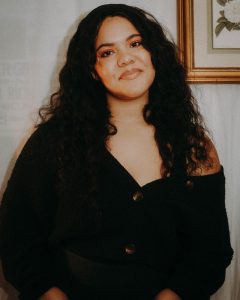
UA studio art alumna Arielle Gray will begin her third year in the MFA photography program at Yale University soon and was buried in her graduate studies in New Haven, Connecticut, this summer when she was contacted by an editor at T – The New York Times Style Magazine.
The editor wanted to know if Gray would be interested in photographing local artists for the story, “The New New Haven.” It’s about local artists, the changing art scene there and the town’s historical relationship with Yale University.

Gray’s subjects included three rising stars in the art world who are based in New Haven: Titus Kaphar (whose work is in the collections of the Metropolitan Museum of Art and the Museum of Modern Art); Dominic Chambers (who has exhibited at the August Wilson Center of African American Art and internationally); and Tschabalala Self (whose work is in the Art Institute of Chicago, the Studio Museum in Harlem, and collections around the world).
Gray, who has been studying photography since she was an undergrad at UA, said this was her first editorial assignment. She thinks T Magazine may have selected her because her style is similar to what they publish. She used much the same approach in shooting the story’s subjects as she does in her own photo work. “I think in regards to the experience differing from my usual practice, it didn’t stray too far from it,” Gray said. “T Magazine contacted me because they were really drawn to my visual language and style. I felt that approaching my subjects was the same as if I were photographing my family members—I always hope to put them at ease despite the camera’s presence.” For this assignment, however, she admitted, she felt like the new kid on the block. “I think I was more nervous than they were! I think all of my subjects have been photographed for larger publications similar to T. I definitely look up to all of them and hope to keep in touch with them as our careers continue to grow.”
For more information about The University of Alabama’s programs in studio art and art history, visit our Degree Programs page.